Energy monitoring
Measurement of current total energy consumption Measurement of energy intensive systems to derive a map of energy flows in the building:
- Electricity
- Heat
- Gas
- Water
- Technical gases (nitrogen, hydrogen, etc.).
- Measurement of qualitative parameters if necessary (power factor, reverse energy, distortion).
- Historical overviews.
- Analytical functions – approximation, correlation of curves, own graphs.
- Trends and forecasts.
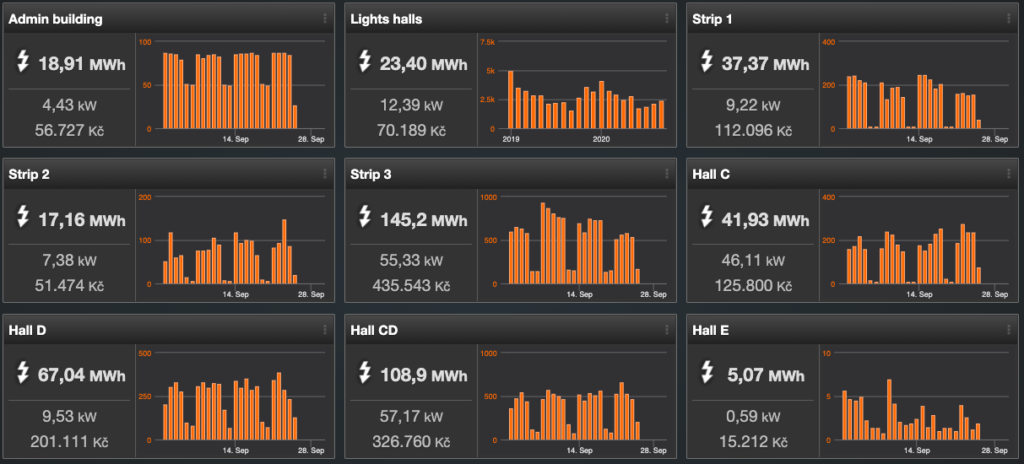


Control of energy flows
- Management of energy peaks – modelling of energy peaks (dedicated energy management) and shaping of peak levels by control and regulation of technologies.
- Ability to set various rules for energy flow control functions based on energy sources, forecasts, energy requirements, etc.
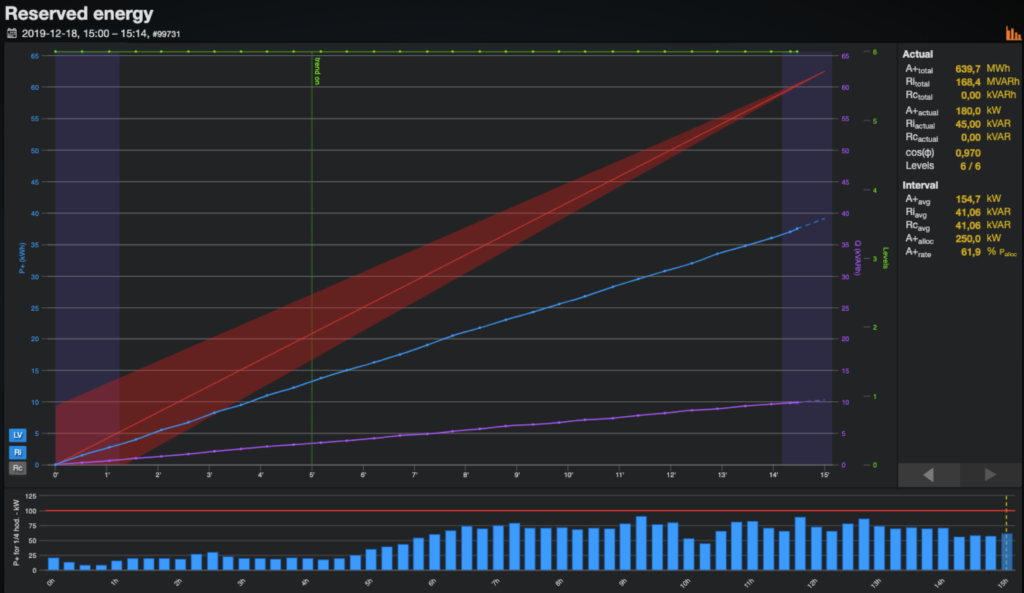
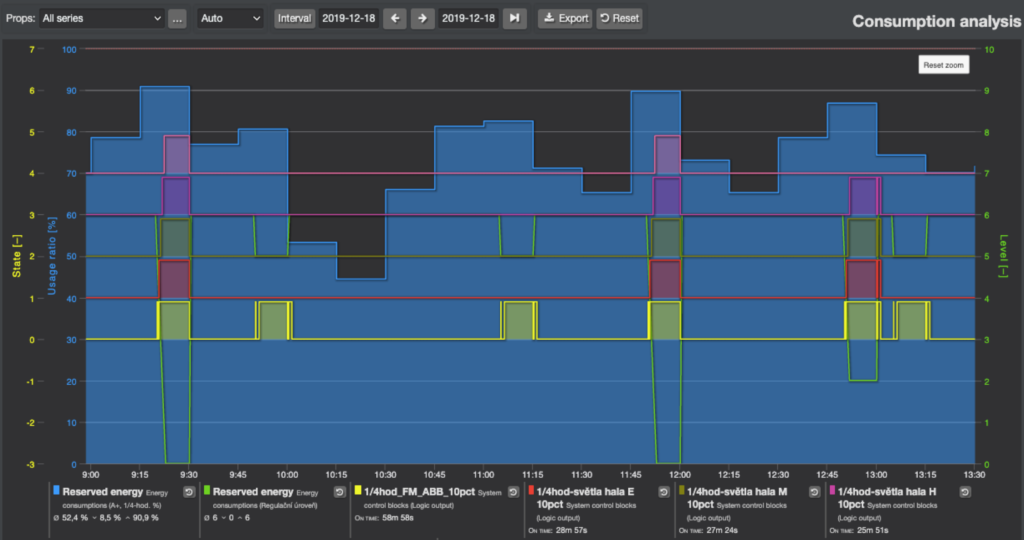
Environmental quality management
Indoor environment management:
- Monitoring of environmental sensors.
- Support for temperatures, humidity, air quality (CO, CO2), floods, presence, light intensity and many other sensors.
Temperature and air quality control:
- Regulation of heating, ventilation, air conditioning or recovery.
- The building is divided into zones (rooms).
- Air temperature and air quality (CO2 + quality) based on individually regulated zones.
- Synchronous control of HVAC systems and demand-based recovery.
- Intelligent ventilation based on CO2 and air quality criteria.
- Window/vent controls (closing / opening) and monitoring of HVAC operation.
- Regulation based on weather data and forecasts.
- Quick programmable buttons for temperature / program selection.
- Weekly heating / ventilation programs based on user preferences and settings.
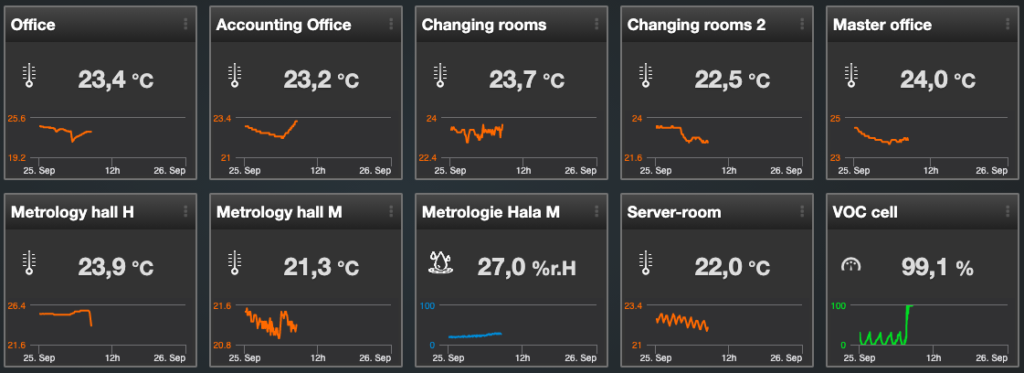

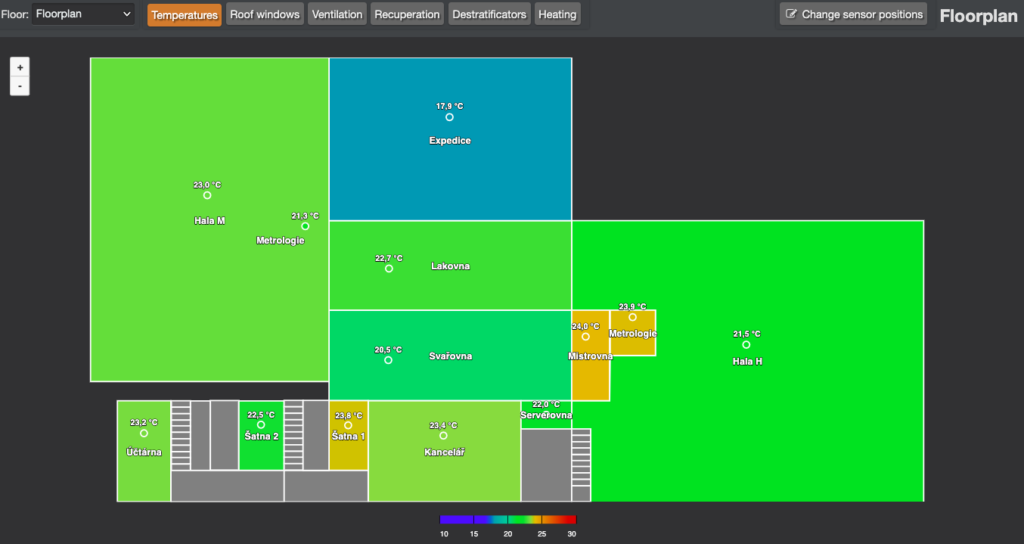
Management of technologies
- Monitoring and control of any electronic devices / machines according to defined rules and automation or manual user interaction.
- Automation based on rules and relationships in regard to other platform-controlled input / outputs.


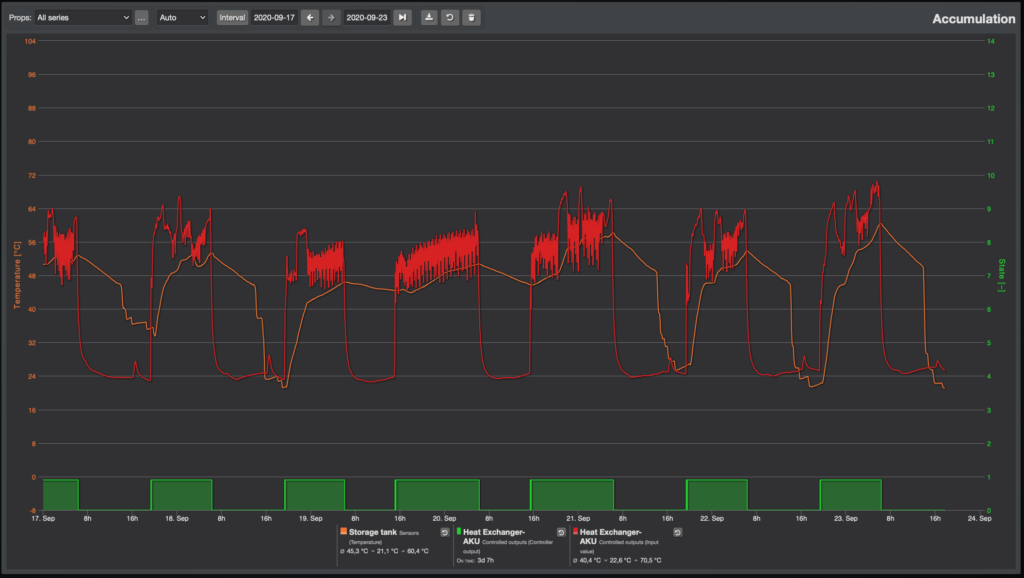
Preventive and predictive maintenance
Flowbox supports analytical functions, where any input and output (sensor, device, binary state) can be allowed to record its own historical data, which can lead to individual graphical messages presented in user panels.
You will find basic line and bar graphs, time diagrams, cumulative volume graphs, stacked bar graphs, pie charts, Sankey diagrams, correlation graphs, temperature map diagrams and more. Correlation graphs also support optional calculations of mathematical sequences.
Any input / output can have appropriate thresholds set for normal operation and trigger events in the event of unusual behavior.
Alarm events can be e-mails, SMS or pushover (instant messaging) alarms or specific commands that can trigger other external visualized (flashing) or audible alarm systems.
The granularity of historical records is based on received or retrieved raw data from sensors / devices or filtered by the hour/day/week/month/year selection.
Export to .xls/.csv or image format is natively supported.
The solution can be further extended with specific diagnostic sensors and analytics. In such a case, a specific mathematical machine learning (ML/AI) algorithm would provide anomaly detection and early warnings based on analyses of measurements and patterns of behavior.
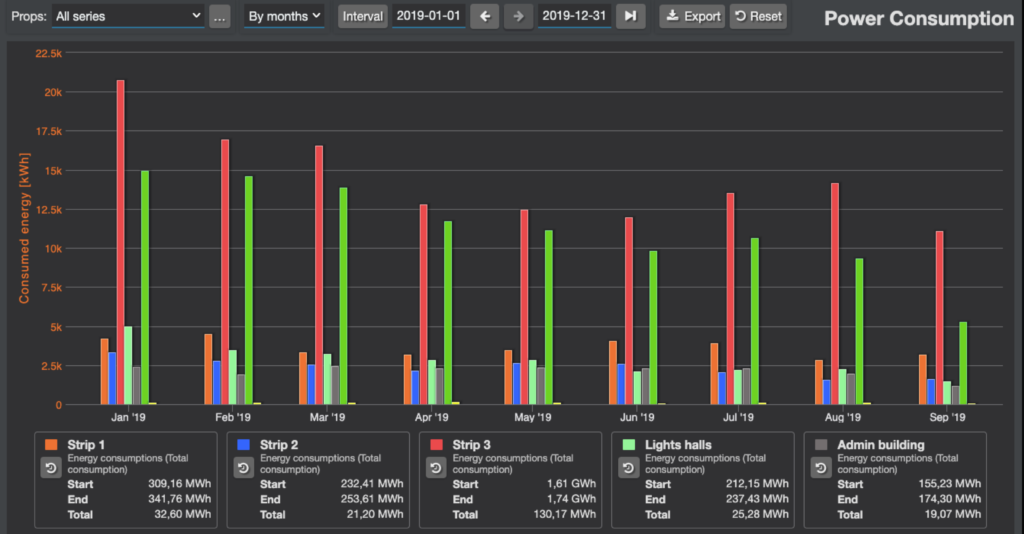
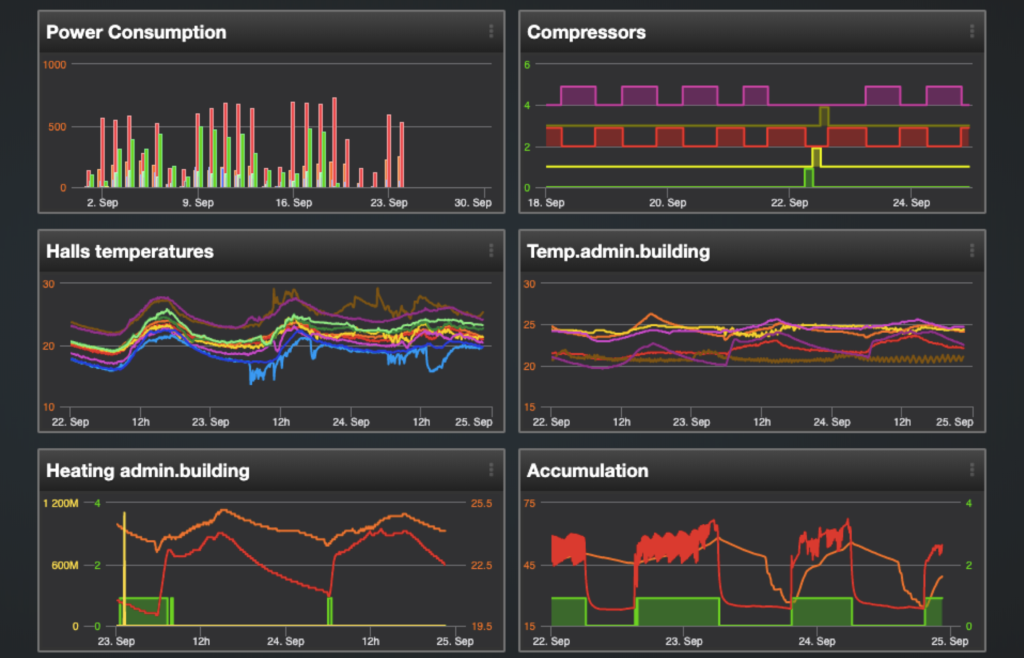
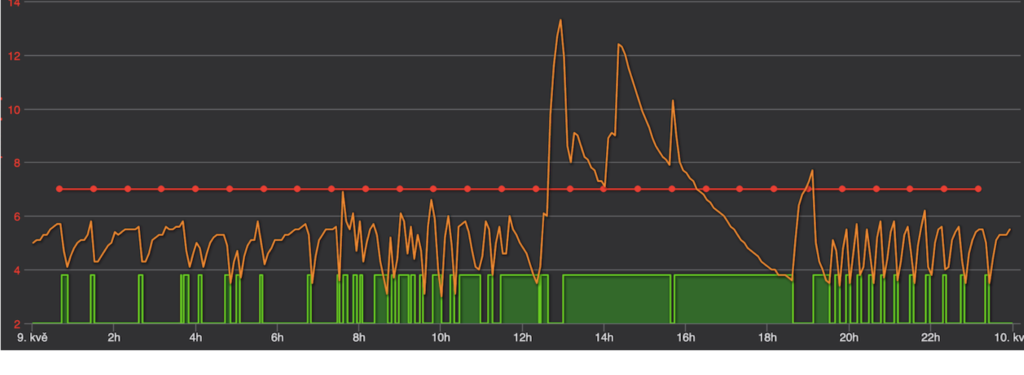

Productivity and machine utilization
Flowbox supports tracking and correlation of production costs of various customer orders. It combines and compares the number of items produced, the amount of energy consumed, the time of use of the production line and other parameters as needed.
- Ability to verify the efficiency and productivity of processes.
- Measuring the intensity of machine usage.
- Machine usage compares the actual machine time (settings and run time) with the available time.
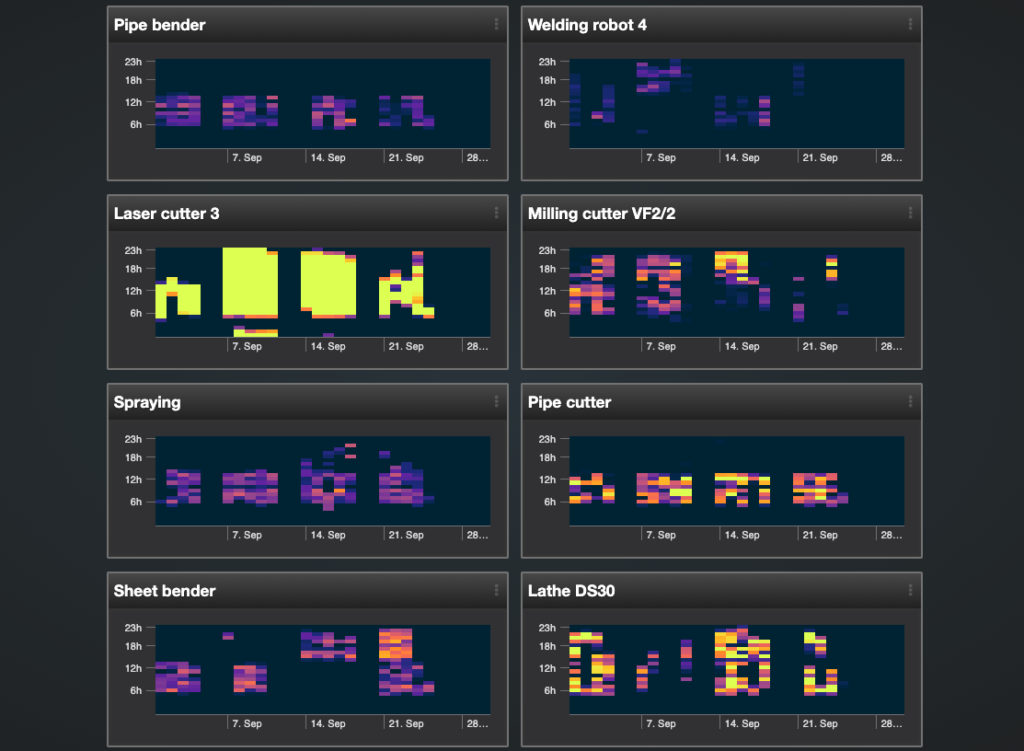
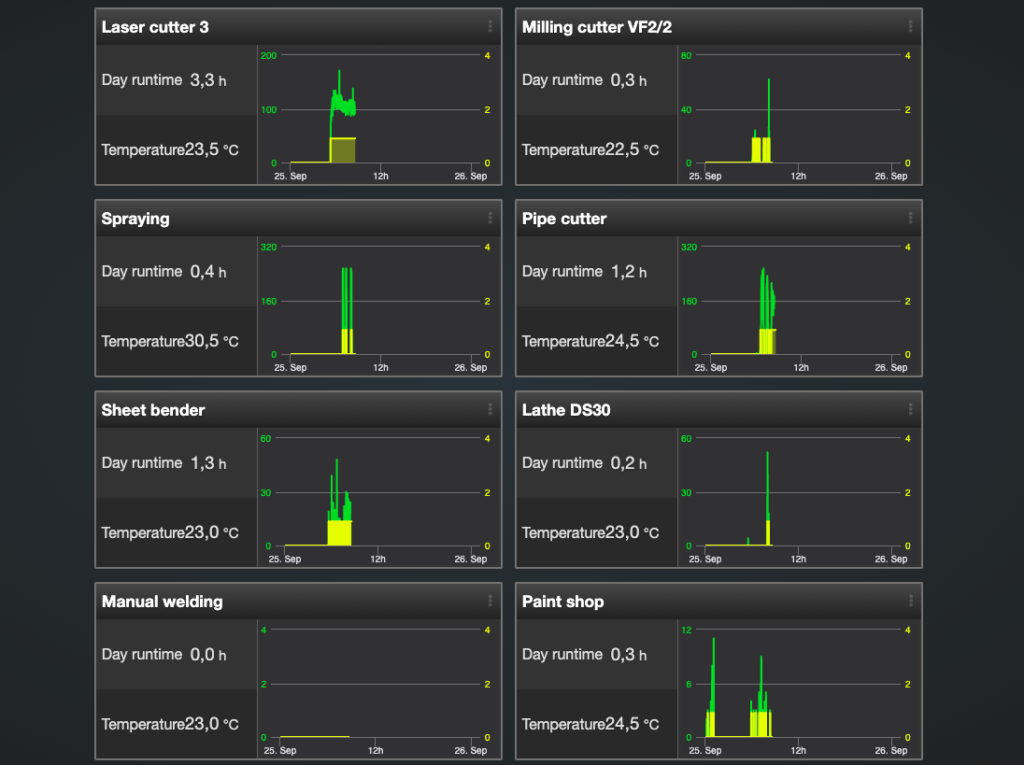
Production monitoring
- Monitoring of key values (temperature / humidity) in a specific environment (food industry, healthcare).
- Monitoring of incident processes.
- Alarm management for alerts and critical operations.
- Workforce management.
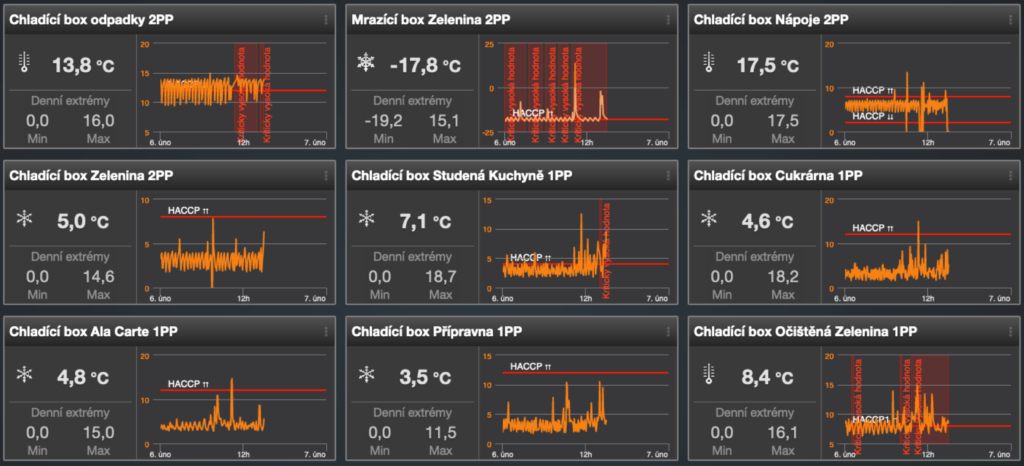
Lighting control
- Indoor / outdoor lighting control (on / off, dimming – DALI, PWM, 0-10V).
- Biodynamic lighting control – automatic dynamic control – removal of toxic blue color at dusk and addition of natural yellow / red color.
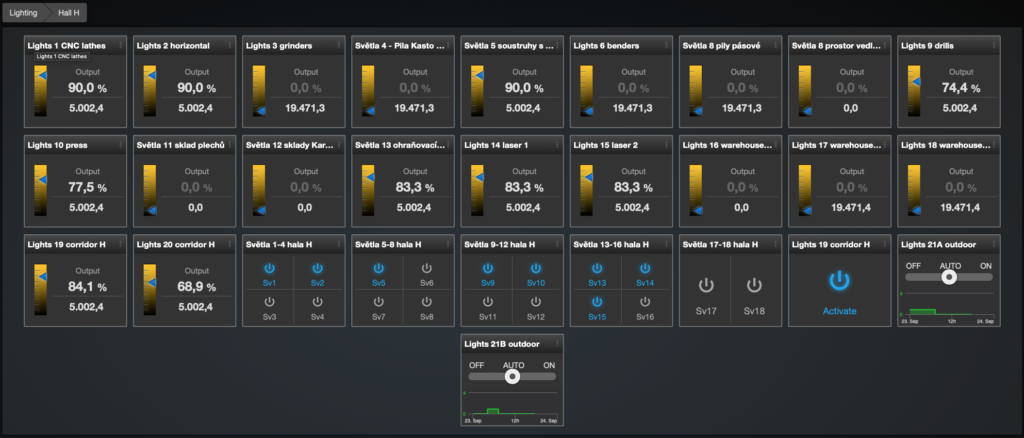
Security and access control
Integration with security / access systems:
- Triggers and control functions based on interaction with fire or security systems.
- Different control profiles for armed / disarmed objects.
- Management of access rights in the building.
- Access management and entry gate control.
- Possibility of integration with vehicle identification systems (camera system, car registration).

Integration of CCTV systems
- Flowbox natively supports IP camera integration as well as video or jpeg streaming. It also offers advanced use of camera systems when using third-party applications.
- Quick access within one web application to the monitored environment (e.g., warehouses, production halls).

2D/3D map materials
- Ability to draw any customer floor plans of building layouts (svg, dwg).
- Support for multiple / interactive layers of individual floor plans.
- Map layout support (for example for IoT or other type of sensors).
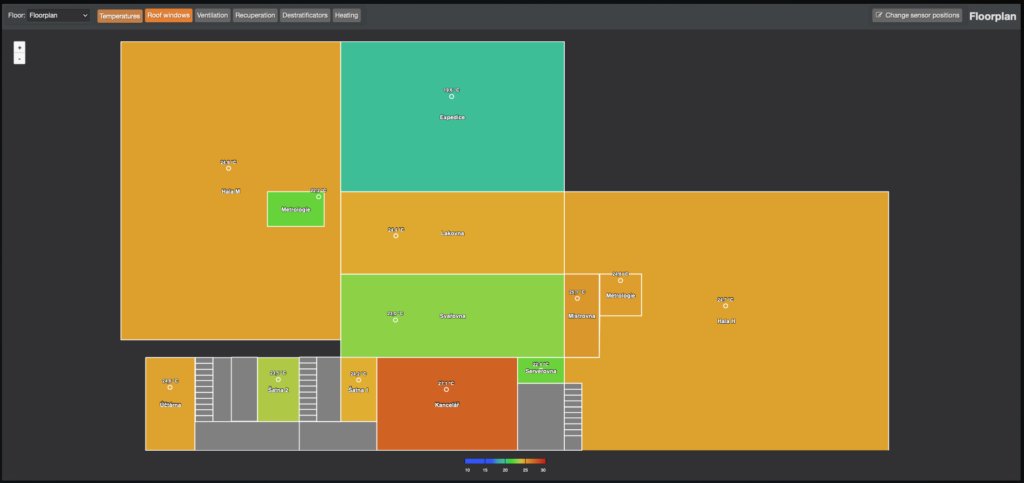
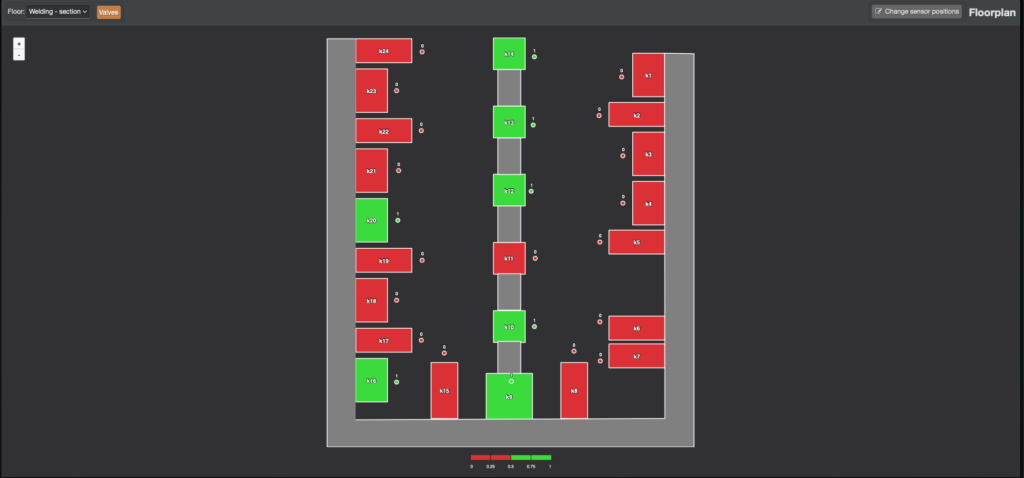
Transport and parking
- Integration of parking detection systems – video analytics or IoT sensors.
- Visualization of the status of parking zones.
- Control of connected technologies – public lighting, access gateways, CCTV.
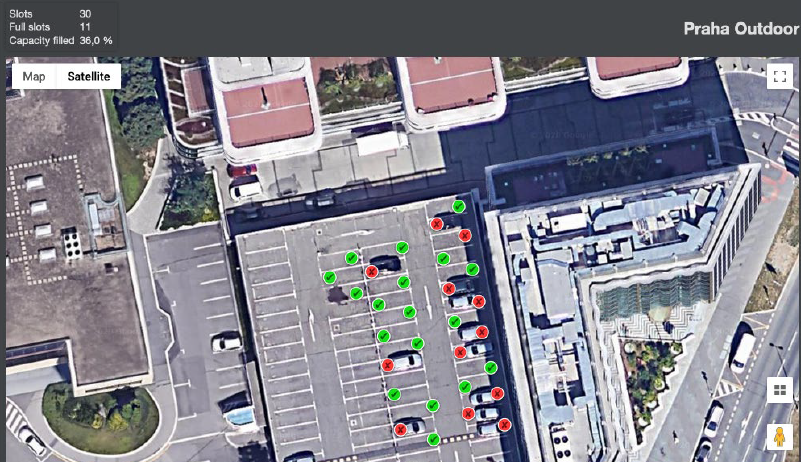
Waste management
- Monitoring of waste in containers.
- Triggers for workforce actions – waste collection.
- Optimization of waste management processes for waste collection.
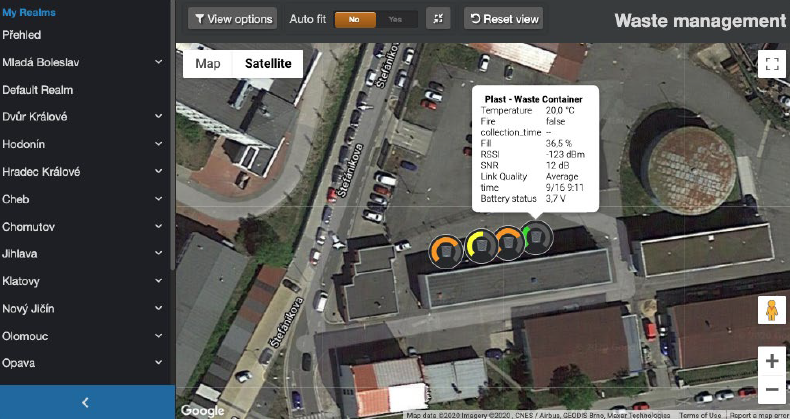
Solutions for IoT
- Flowbox supports modular architecture, vertical and horizontal scalability.
- It can be installed on premises in a closed network environment or as a CLOUD solution.
- Support of various communication standards (TCP/IP, HTTP (S), REST API, MQTT, MODBUS RTU/TCP, BACNET IP, M-BUS, DALI, 1-WIRE, KNX, OPC, SIGFOX, LoRaWAN, NB-IoT).
- REST API for data sharing and data retrieval.
- Easy integration of third-party technologies.

24/7 supervision, SLA, alarms
- SW maintenance, updates, repairs.
- Introduction of new functions.
- Three SLA options SLA1000, SLA3000 and SLA5000. On-request 24/7 NOC, security and back-up as a service.
Aggregation / Flexibility
- Self-sufficient sub-domains using Flowbox Alliance Gateways (FBX5000 family).
- Control of energy flow in the network / local network and regulation of energy consumption according to demand management.
- Network regulation based on the availability of energy resources.